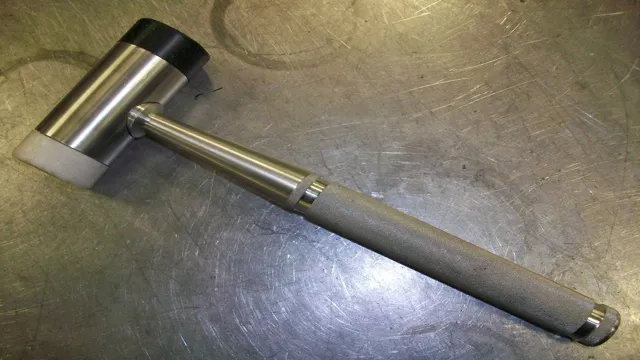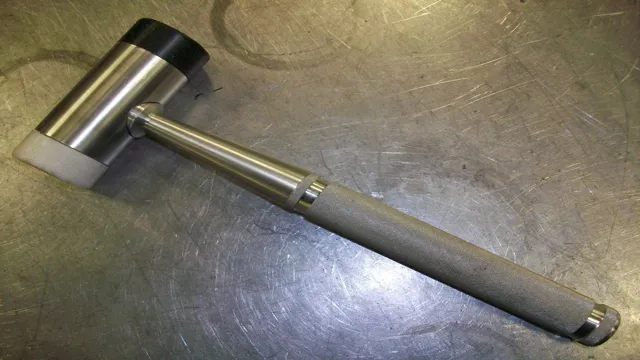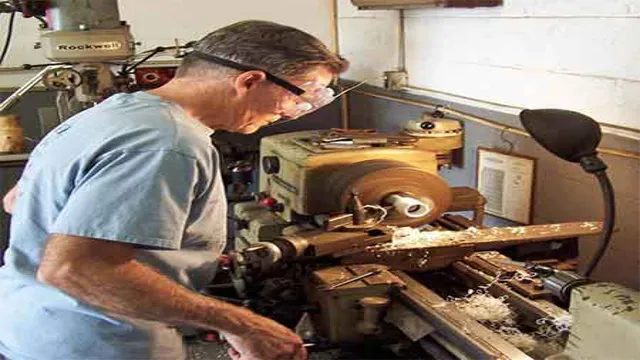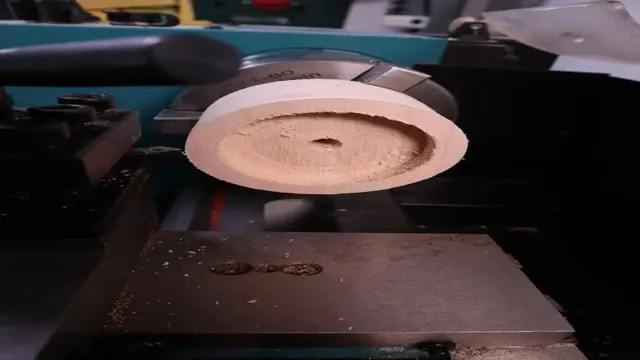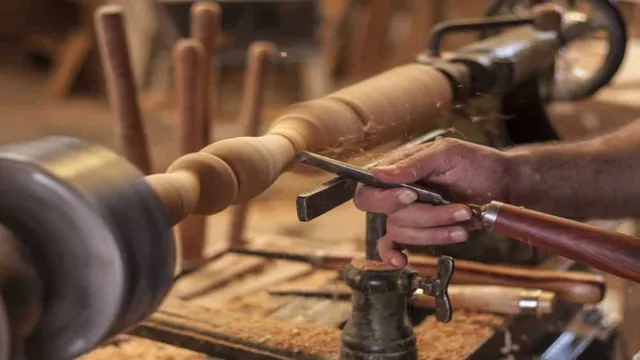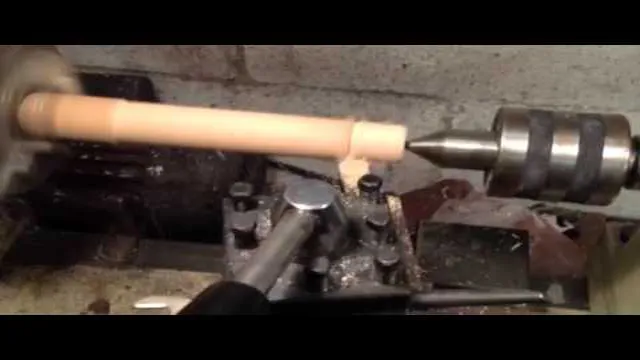What Can You Do with a Metal Lathe: 5 Creative Projects for DIY Enthusiasts
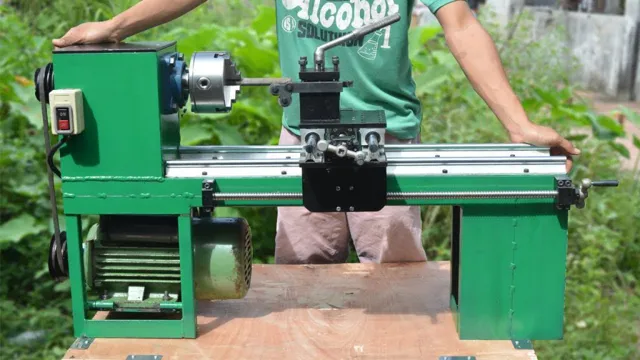
As a DIY enthusiast, you’re always on the lookout for versatile tools that make your projects easier, faster, and more accurate. And if you’re into metalworking, you can’t go wrong with a metal lathe. A metal lathe is a machine that rotates a workpiece around an axis while cutting, drilling, or shaping it with different tools.
It’s an essential tool for metalworkers, machinists, mechanics, and other professionals who deal with metal parts. But don’t worry, its versatility can also cater to your personal use. Whether you want to create customized parts, jewelry, or even just sharpen tools, a metal lathe can help you achieve your goals.
In this blog, we’ll explore the different applications of a metal lathe, its features, and how it can benefit your projects. So, buckle up and let’s get started!
What is a Metal Lathe?
A metal lathe is a versatile machine used in metalworking to create precise, symmetrical cuts and shapes in metal. With a metal lathe, you can turn cylindrical pieces of raw material into a variety of shapes, such as threads, grooves, and tapered surfaces. But that’s not all you can do with a metal lathe; you can also drill precise holes into metal, bore out cavities, and mill flat surfaces with some attachments.
It’s fascinating how this machine can transform a single piece of raw metal into a complex and intricate component used for various industrial applications. So if you’re looking to manufacture custom components or restore old machinery, a metal lathe might be an excellent investment. With some skill and practice, you can create just about any shape you can envision with a metal lathe.
Definition and Features
A metal lathe is a powerful and versatile machine used for cutting, shaping, and drilling metal material. It consists of a rotating spindle that rotates at high speeds and holds the metal workpiece securely in place, while a cutting tool moves along the workpiece to create a desired shape or cut. Some of the key features of a metal lathe include a sturdy bed that provides stability to the entire machine, a tailstock that supports the other end of the workpiece, and a variety of cutting tools and attachments that can be changed depending on the specific job.
With a metal lathe, you can create precisely engineered parts and components with incredible accuracy and control. Whether you are a professional machinist or an avid hobbyist, a metal lathe is an essential tool for any metalworking enthusiast.
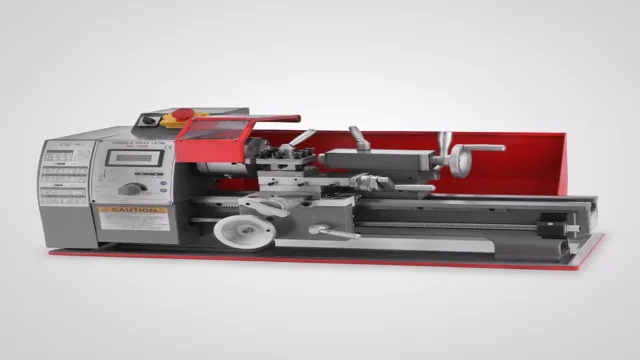
Types of Metal Lathes
A metal lathe is a machine tool used to shape and cut metal pieces to create a specific design or size. There are various types of metal lathes such as engine lathes, bench lathes, turret lathes, and precision lathes. Engine lathes are the most common lathe used in industrial facilities as they can handle large and heavy objects and have a wider range of capabilities.
Bench lathes are smaller and designed for home workshops and repair shops, and they can perform basic cutting and shaping tasks. Turret lathes have an automated tool-changing system that allows for faster and more efficient production runs. Precision lathes are used for high-precision work such as creating watch parts or small components for medical devices.
Overall, the type of metal lathe needed depends on the intended use, size, and complexity of the project.
Metal Lathe Uses
If you’re wondering what you can do with a metal lathe, the possibilities are truly endless. From making intricate jewelry to constructing heavy-duty machinery components, a metal lathe is an incredibly versatile tool for many types of projects. With precision cutting and shaping capabilities, a lathe can help you create custom parts for your automotive, industrial, or even artistic endeavors.
You can turn cylindrical or spherical shapes with ease, create threads of different sizes and shapes, and produce grooves and holes in varying depths and patterns. With practice and patience, you can even create complex shapes and designs that add unique flair to your work. So whether you’re a seasoned machinist or just getting started, a metal lathe is a tool that can help you realize your creative vision and bring your projects to life.
Metalworking and Machining Applications
Metal lathe uses are numerous in the metalworking and machining industry. A metal lathe is a machine that rotates and shapes metal objects, including screws, bolts, and complex parts like gears and bushings. These machines use various cutting tools to remove material from a workpiece, creating a finished product to the desired specifications.
There are several types of metal lathe machines available, including benchtop, engine, and turret lathes, each with its own unique capabilities. These machines are used in various industries, including automotive, aerospace, and furniture making. Metal lathe operators are highly skilled professionals who can work with precision and accuracy to create complex parts and components.
They play a vital role in the manufacturing process and are in high demand in the industry. Mastering the use of metal lathe machines takes time and practice, but it can be a fulfilling career path for those interested in the metalworking and machining industry.
Creating Metal Parts for DIY Projects
Metal lathe is a versatile tool that is essential for metalworking and cutting operations. The lathe is capable of creating a wide range of metal parts used in DIY projects, including gears, rods, and cylinders. A good metal lathe is built for precision, durability, and versatility, and can be used for both rough and fine turning.
One of the most common uses of a lathe is for creating threads, which can be used for screws, bolts, and other threading applications. Additionally, a lathe can be used for shaping and polishing metals to improve their finish. Whether you are a professional metalworker or a DIY enthusiast, investing in a high-quality metal lathe will prove to be a great investment in the precision and efficiency of your work.
So if you’re looking to take your DIY projects to the next level, a reliable metal lathe is an essential tool that you shouldn’t hesitate to add to your arsenal.
Woodworking and Spindle Work
Metal Lathe Uses Metal lathe is a versatile machinery tool commonly used in woodworking and spindle work. It’s perfect for shaping and turning metalwork, creating a smooth and precise finish. One of the most common metal lathe uses is for creating intricate metal designs and parts that require a high level of precision and accuracy.
With the help of a metal lathe, craftsmen can create intricate designs and parts with a smooth finish that is impossible to achieve with manual tools. These can be used for various applications, including creating metal jewelry, ornamental metalwork, and machine parts that require precise measurements. Those who are passionate about woodworking or spindle work can use metal lathe to create different types of wooden and metal objects.
Metal lathe is the perfect tool for any woodworking and spindle work enthusiast who wishes to perfect their craft and create precise, intricate designs that will last a lifetime. So, if you’re looking for a new way to bring your woodworking and spindle work to the next level, consider investing in a metal lathe and exploring all the amazing things you can create with it!
Metal Lathe Techniques
If you’re looking for versatility in metalworking, a metal lathe is a machine that can get a lot done. With a metal lathe, you can turn, drill, bore, thread, cut, face, and chamfer metal materials with impressive accuracy. Turning is perhaps the most basic function of a metal lathe, where you use a cutting tool to create cylindrical shapes or taper the end of a rod.
You can also drill through objects to create holes, add threading to bolts or screws, and flatten surfaces to create flat spots or grooves. Another useful ability of metal lathes is to create ornate designs on metal objects by using a tool bit to create intricate patterns in the metal. Additionally, lathes can also be used to make gears, shafts, and other mechanical components that require precision and accuracy.
A metal lathe is undoubtedly a machine that can add immense value to your metalworking toolkit, offering a wide range of techniques and capabilities that let you customize metal materials to your satisfaction.
Turning Techniques
Metal lathe techniques are essential to produce high quality precision parts. One of the most popular turning techniques is facing, used to produce a flat surface on the end of round material. It is executed by setting the cutting tool perpendicular to the workpiece and then moving it across the surface.
Another technique is turning, where the workpiece is rotated against the cutting tool. The tool should be held in a 90-degree angle to the workpiece, adjusted to the proper depth of cut, and moved along the length of the workpiece. Refacing is a technique used to restore flatness to a previously faced surface.
It is achieved by placing the cutting tool on the existing surface and lowering it to the desired depth, then moving it along the surface in a manner similar to facing. Lastly, threading is used to create screw threads on the workpiece. The tool is adjusted to the proper angle and depth, and moved along the length of the workpiece to create the desired thread pattern.
Remember, mastering these metal lathe techniques is crucial for a successful turning process.
Threading Techniques
Metal lathe techniques offer a variety of threading methods to create precise and efficient cuts. One popular threading technique is called single-point threading. This technique involves setting up the lathe tool to make one pass along the length of the workpiece.
This method is ideal for small batches of parts and allows for easy adjustment of the tool as necessary. Another threading technique is called cut threading, which involves using a threading die to create the threads along the workpiece. This method is useful for larger production runs and can provide consistent and accurate results.
Whichever threading technique you use, it is essential to maintain proper cutting speed and use the correct tool to ensure a high-quality finished product. By mastering these techniques, metalworkers can achieve high levels of precision and accuracy in their threading work.
Conclusion
If you’re feeling stuck in a rut and unsure of what to do with a metal lathe, fear not! With a little creativity and know-how, the possibilities are endless. From crafting intricate woodcarvings and metal sculptures to building custom car parts and even turning your own bowling balls, there’s no limit to the versatility of this powerful machine. So roll up your sleeves, fire up those tools, and let your imagination run wild – who knows what amazing things you’ll be able to create with a metal lathe in your hands!”
FAQs
What is a metal lathe used for?
A metal lathe is used for shaping and cutting metal into a desired shape or size.
What types of metals can be used on a metal lathe?
A metal lathe can work with a variety of metals including aluminum, brass, copper, stainless steel, and titanium.
How do you use a metal lathe?
To use a metal lathe, you must first secure the metal piece in place, select the desired cutting tool, and adjust the tool rest and cutting speed before beginning the shaping or cutting process.
What are the different types of cutting tools used on a metal lathe?
The different types of cutting tools used on a metal lathe include single-point cutting tools, multi-point cutting tools, boring tools, and threading tools.
Can a metal lathe be used for precision machining?
Yes, a metal lathe is often used for precision machining as it can cut metal with extreme accuracy and tight tolerances.
How do you maintain a metal lathe?
To maintain a metal lathe, you should keep it clean and lubricated, regularly inspect and replace parts as needed, and ensure that it is calibrated correctly for accurate cutting.
Can a metal lathe be used for woodworking?
While a metal lathe is primarily designed for metalworking, it can also be used for woodworking by using specialized cutting tools and techniques.

